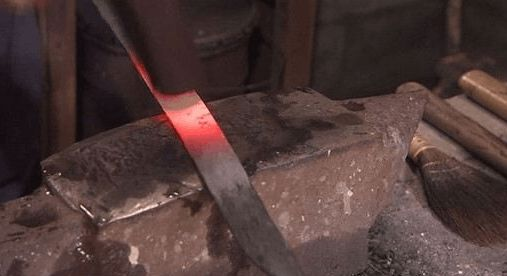Remove impurities: The high-quality jade steel is sent to the blacksmith, and through repeated beating, the iron and carbon are more tightly combined. Simultaneously remove impurities. This process is time-consuming and tedious, but crucial because impurities in the steel can affect the quality of the knife. After removing impurities, experienced blacksmiths can determine the carbon content of jade steel based on its elasticity.

Casting knife: After removing impurities, the casting knife maker heats the jade steel and hammers the high carbon part into a long U-shaped shape. Then beat the low carbon jade steel into long strips and embed them in the center of the U-shape. Now, metals with different characteristics are deployed in the most appropriate positions. The hard material is wrapped around the outside to ensure a sharp blade, while the tough metal at the core can withstand greater impact force. It is the combination of these two characteristics that makes the samurai sword the most famous weapon in the world
Coating: The blade has been completed now, but the work of the blade caster is not yet completed. Before the final forging process, a layer of secret material mixed with clay and charcoal powder should be applied to the knife. This can isolate some of the blades, allowing some to cool faster than the other, and leave a unique pattern on the blade. Then the knife maker puts the knife in tempering and heats it to about 800 ℃.

Curve formation: Next, the blacksmith puts the fiery red knife into the sink and cools it quickly. This process is called quenching. Due to the low carbon content in the back and center of the knife, the degree of shrinkage is significant. The blade part contains more carbon elements and has less shrinkage. This difference in contraction speed and degree creates a curved shape. Quenching is a crucial step in life and death, and one-third of the knives fail at this stage.
Polishing: The final step is polishing. This process takes up to two weeks. The grinding stone used by the grinder is expensive, and a set may cost thousands of dollars. When polishing, changing from the roughest stone to the most delicate one not only requires patience and skill, but also can easily lead to injury.




